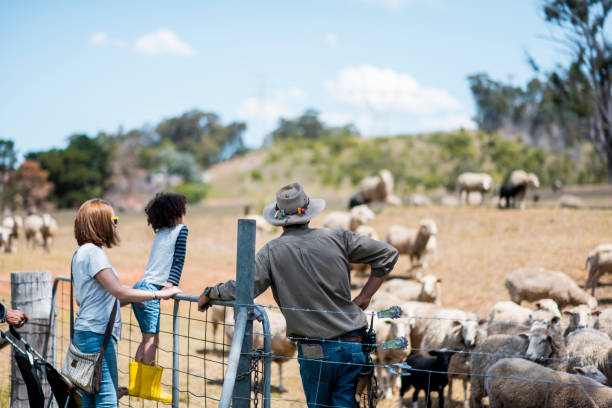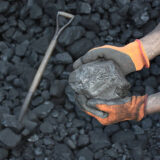Agrotourism, a blend of “agriculture” and “tourism,” refers to a unique form of travel that revolves around agricultural experiences. It involves visiting working farms, ranches, vineyards, or other agricultural spaces for leisure, education, or active participation in farming activities. This immersive approach allows visitors to gain firsthand insights into the agricultural process, from planting to harvesting, and often includes opportunities for activities like fruit picking, animal feeding, and even farm stays.
Agrotourism has emerged as a vital component of the agricultural industry, offering a range of benefits for both farmers and visitors alike. For farmers, it presents a supplementary income source and diversification opportunity. Additionally, it fosters a deeper appreciation for agriculture and rural life, bridging the gap between urban and rural communities. Agrotourism also plays a significant role in preserving local traditions and cultural heritage associated with farming practices.
In recent years, technology has become an integral part of modern agriculture, revolutionising traditional farming practices. This technological wave has not only boosted agricultural productivity and sustainability but has also deeply impacted the agrotourism sector. With advancements in precision farming, automation, and data-driven decision-making, farms are now equipped to offer visitors a cutting-edge experience that seamlessly integrates technology and agriculture.
Technology in Agriculture
A. Precision Farming
1. GPS and GIS Applications
One of the cornerstones of modern agriculture is the utilisation of Global Positioning System (GPS) and Geographic Information System (GIS) technologies. GPS enables farmers to precisely map out their fields, allowing for accurate planting, harvesting, and irrigation. GIS, on the other hand, provides spatial data analysis, enabling farmers to make informed decisions based on detailed geographical information.
2. Drones and Aerial Imaging
Drones have revolutionised the way farmers monitor their crops. Equipped with high-resolution cameras and other sensors, drones can capture aerial images of fields, providing invaluable insights into crop health, pest infestations, and irrigation needs. This aerial perspective allows for targeted interventions, optimising resource allocation and maximising yields.
3. IoT Sensors in Farming
The Internet of Things (IoT) has found a fertile ground in agriculture. Smart sensors placed throughout the farm collect real-time data on soil moisture levels, temperature, humidity, and more. This data is then transmitted to a central system, enabling farmers to make timely adjustments to irrigation schedules and fertiliser application, ultimately leading to more efficient resource usage.
B. Sustainable Practices
1. Vertical Farming and Hydroponics
Technology has enabled the development of innovative farming methods like vertical farming and hydroponics. These practices utilise controlled environments and minimal water usage to grow crops in vertical stacks or nutrient-rich water solutions, respectively. By reducing the need for vast expanses of arable land, they offer sustainable alternatives to conventional farming.
2. AI-Powered Crop Management
Artificial Intelligence (AI) algorithms are now being employed to analyse vast amounts of agricultural data. These algorithms can predict optimal planting times, detect diseases early, and recommend precise fertiliser and pesticide application rates. This level of precision not only boosts crop yields but also minimises environmental impact.
3. Renewable Energy Solutions
Agriculture is also benefiting from renewable energy technologies. Solar panels, wind turbines, and bioenergy systems are being integrated into farms to generate clean, sustainable power. This not only reduces operational costs for farmers but also contributes to a more environmentally friendly agricultural sector.
Agrotourism and Technology Integration

A. Enhancing Visitor Experience
1. Virtual Farm Tours
Technology has opened up new avenues for agrotourism by offering virtual farm tours. These immersive experiences allow visitors to explore farms from the comfort of their homes, providing a glimpse into the daily operations and unique features of the agricultural setting. Virtual reality (VR) and augmented reality (AR) technologies play a crucial role in creating these engaging and educational experiences.
2. Mobile Apps for Navigation and Information
Mobile applications have become indispensable tools for agritourism destinations. These apps provide visitors with maps, information about various attractions on the farm, and even interactive features for planning their visit. Additionally, they offer real-time updates on events, workshops, and special activities, enhancing the overall experience.
3. Interactive Displays and Exhibits
Technology-driven interactive displays and exhibits serve as powerful educational tools during agrotourism visits. These displays can provide in-depth information on farming techniques, sustainability practices, and the journey of agricultural products from field to table. Touchscreen interfaces and multimedia presentations engage visitors in a meaningful and informative way.
B. Farm-to-Table Experiences
1. Automated Harvesting and Processing
Incorporating automation into the harvesting and processing stages of agriculture enhances the efficiency and safety of these operations. Visitors can witness the seamless integration of technology in actions like automated harvesting equipment or processing lines. This not only showcases modern farming practices but also emphasises the role of technology in food production.
2. Traceability and Quality Assurance
Technology facilitates the implementation of traceability systems, allowing consumers and visitors to track the origin and journey of agricultural products. QR codes, RFID tags, and blockchain technology enable transparent supply chains, providing assurance of quality and safety. This transparency builds trust between farmers and consumers.
3. Smart Packaging and Distribution
The final stages of agricultural production benefit from smart packaging and distribution solutions. RFID-enabled packaging, temperature monitoring, and route optimization technologies ensure that products reach their destinations in optimal conditions. This not only extends the shelf life of produce but also reduces food waste.
Economic Impacts
A. Increased Efficiency and Productivity
1. Yield Optimization through Technology
The adoption of advanced technology in agriculture leads to higher yields and improved productivity. Precision farming techniques, such as targeted irrigation and fertiliser application, ensure that resources are used efficiently. This not only boosts crop yields but also allows farmers to make the most of their available land.
2. Cost Reduction and Resource Management
Technology-driven practices help in minimising operational costs for farmers. For instance, IoT sensors and automation systems enable precise resource management, reducing wastage of water, energy, and other crucial inputs. Additionally, data-driven insights assist in making informed decisions, further contributing to cost-effectiveness.
B. Job Creation and Skill Development
1. New Roles in Tech-Driven Agriculture
As technology becomes increasingly integrated into agriculture, new roles and job opportunities emerge. These roles range from data analysts who interpret agricultural data to drone pilots responsible for capturing aerial imagery. This shift in the industry’s workforce demands a diverse set of skills, from tech proficiency to agronomic expertise.
2. Training and Education Opportunities
The convergence of technology and agriculture creates a demand for specialised training and education programs. Institutions and organisations now offer courses and workshops focused on agrotechnology, equipping individuals with the skills needed to thrive in this evolving field. This not only benefits aspiring professionals but also contributes to the overall growth of the agricultural sector.
Investment Opportunities in Agrotech
A. Startups and Innovations in Agrotech
The agrotech sector is experiencing a surge in innovation, with startups at the forefront of these advancements. These companies are developing cutting-edge technologies to address various challenges in agriculture, from sustainable practices to precision farming. Investors looking for promising opportunities are increasingly turning their attention towards agrotech startups.
B. Funding and Support for Agrotech Ventures
The agrotech industry has garnered significant attention from venture capital firms, government initiatives, and agricultural organisations. These entities recognize the potential for transformative technologies to revolutionise the agriculture sector. As a result, there is a growing availability of funding and support for agrotech ventures, providing a robust ecosystem for startups to thrive.
C. Potential Returns for Agriculture Investors
Investing in agrotech presents a unique opportunity for financial returns, as well as contributing to the advancement of sustainable and efficient farming practices. With the potential to drive substantial improvements in crop yields, resource utilisation, and environmental sustainability, agrotech investments offer a compelling proposition for both impact-driven and profit-seeking investors.
Challenges and Considerations
A. Accessibility and Adoption of Technology
While technology offers numerous benefits to agrotourism and agriculture, there are challenges related to accessibility and adoption. Not all farmers have equal access to advanced technology, especially in remote or less developed regions. Bridging this digital divide and ensuring widespread adoption of tech-driven practices is crucial for inclusive progress in the agricultural sector.
B. Environmental and Ethical Concerns
As technology becomes more integrated into agriculture, it’s important to address environmental and ethical considerations. For instance, there may be concerns about the environmental impact of certain technologies, or ethical dilemmas related to the use of automation in farming practices. Striking a balance between technological advancements and sustainable, ethical practices is essential.
C. Regulatory and Policy Considerations
The rapid pace of technological innovation in agriculture raises important regulatory and policy questions. Issues related to data privacy, intellectual property rights, and safety standards for agrotech applications need careful consideration. Governments and regulatory bodies play a pivotal role in ensuring that technology is deployed responsibly and ethically in the agricultural sector.
Future Trends in Agritourism and Agriculture Investment
A. Emerging Technologies to Watch
The future of agrotourism and agriculture investment is poised for even more technological innovation. Emerging technologies like Artificial Intelligence (AI), Blockchain, and advanced robotics are on the horizon. These technologies have the potential to further revolutionise farming practices, enhance visitor experiences, and create new opportunities for investment.
B. Potential Shifts in Consumer Preferences
Consumer preferences are evolving, with a growing interest in sustainable and locally sourced products. This shift in consumer behaviour presents an opportunity for agrotourism and agriculture investment to align with these trends. Farms that embrace sustainable practices and offer educational agrotourism experiences are likely to see increased demand.
C. Policy and Industry Developments
As the agrotech sector continues to grow, it will be influenced by policy changes and industry developments. Government initiatives, subsidies, and regulations can significantly impact the adoption of new technologies in agriculture. Staying informed about these policy shifts is crucial for both agro tech startups and investors looking to navigate this dynamic landscape.
Conclusion
In this article, we’ve explored the dynamic intersection of technology, agrotourism, and agriculture investment. We began by defining agrotourism and highlighting its significance in modern agriculture. We then delved into the pivotal role of technology, from precision farming to sustainable practices, in shaping the agricultural landscape.
As we look ahead, it’s evident that the synergy between agritourism and technology will continue to drive innovation and growth in the agricultural sector. For farmers, embracing technology can lead to increased efficiency and productivity. For investors, agrotech presents exciting opportunities for both financial returns and positive impact on the environment.
The future of agriculture is undeniably intertwined with technology. By leveraging the power of innovation, we have the potential to revolutionise the way we cultivate, process, and experience agriculture. As agrotourism and agrotech continue to evolve, they will not only contribute to a more sustainable and efficient food system but also create memorable and educational experiences for visitors.












